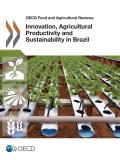This paper discusses some of the main challenges in developing a robust and viable project pipeline to address the daunting infrastructure needs facing many countries worldwide. It first introduces infrastructure project pipelines in different countries and then analyses challenges from political side as well as planning, preparation, and execution processes. After that, it presents project preparation phases and different types of project preparation facilities. Followed by that, it raises possible project preparation models for a new financial institution.
This paper is part of the working paper series "Infrastructure Finance in the Developing World" and is a joint research effort by GGGI and the G-24, exploring the challenges and opportunities for scaling up infrastructure finance in emerging markets and developing countries.
This scoping study provides ideas, techniques and case studies on how renewable energy can be better communicated to and by policy makers, decision makers and other stakeholders. It examines 15 case studies of renewable energy communications strategies from government, the private sector, and civil society. The majority of cases were found to lack rigorous, well-planned and adequately evaluated communications strategies. The study looks at how more targeted, effective renewable energy communications campaigns can be achieved through the use of more consistent, holistic and rigorous approaches to pre- and post-campaign development.

Agriculture and the agro-processing sector in Brazil have shown impressive growth over the past two decades. This has largely been driven by productivity improvements and structural adjustment resulting from broad economic reforms, as well as new technologies developed by agricultural science. Government policy and industry initiatives are increasingly focused on the sustainability of agricultural development.
This paper has been developed to inform discussions on smart infrastructure development and financing as part of the sustainable development goals (SDGs) and climate processes in 2015. The article is designed to respond to five questions. First, why is a major increase in investments in better infrastructure essential to both development and climate goals? Second, what is holding back this investment? Third, how can the deployment of private capital into infrastructure investment be doubled? Fourth, what is the distinctive role of development banks in closing the infrastructure investment and financing gap? Fifth, how can official development assistance and climate finance reinforce each other?
The electricity system in Turkey faces three challenges. First, demand for electricity is growing as economic growth brings increased energy usage. Second, as the electricity supply expands to keep pace with demand there is the need to ensure that electricity prices remain affordable. Third, as energy and electricity are at the heart of modern economies, energy security is critical for the electricity sector. To balance the competing demands of demand growth, affordability and energy security, policy must seek to create a framework that promotes technologies and projects that meet these needs and deliver sustainable development.
